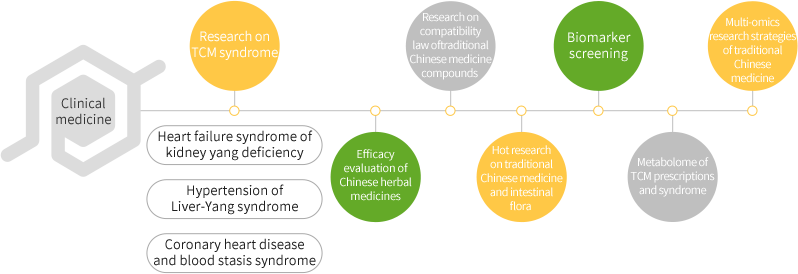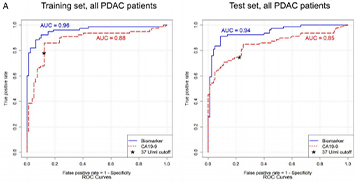
Medical Metabolomics
Fatty Acid (Fatty Acid) is a general term for the Fatty acids formed by the hydrolysis of natural oils and fats with water. At present, there are more than 200 kinds of natural fatty acids, which are widely found in animal and vegetable oils.
Fatty acids play a very important role in the process of life. They are the basic substances that make up human body fat and lipids, and are important component of cell membrane phospholipids. It can also regulate the composition of cell membrane and the proteins and receptors in the membrane directly. With the development of fat nutrition research, people pay more and more attention to the nutritional function, biological function and the relationship with disease and health of fatty acids.



Journal: Gut Impact factor: 19.819 Published date: 2018 Published by: University of Graveswald, Germany
Chronic pancreatitis (CP) arises with an incidence of between 4 and 23/100 000 in different populations and represents a risk factor for pancreatic cancer and a frequent differential diagnosis. Common diagnostic methods for these two diseases include B-ultrasound, CT, and tumor marker determination. CA19-9 is a marker for pancreatic cancer, but CA19-9 may also be elevated in patients with non-malignant disease. At present, many patients with pancreatic cancer are found in the final stage, and 80%–85% of patients are being diagnosed in unresectable stages. Diagnosis is further hampered in the presence of CP, but earlier detection would increase survival by 30%–40%. Thus, there is a clear medical need for the early detection of pancreatic cancer in patients with CP. Current non-invasive diagnostic tests can distinguish between pancreatic cancer (pancreatic ductal adenocarcinoma (PDAC)) and chronic pancreatitis (CP) in only about two thirds of patients. This paper aims to find blood-derived metabolic biomarkers with optimized negative predictive value.
Unsupervised principal component analysis (PCA): principal components 3 and 4 were used to separate 237 pancreatic cancer PDAC patients and 239 CP patients (training set + test set plasma and serum samples).

Variance analysis of training set data: 29 different metabolites were detected in common between PDAC and CP in serum and plasma (as shown in figure). To construct an effective diagnostic model for pancreatic cancer, nine plasma metabolites (except CA19-9) were screened by elastic network algorithm.

The diagnostic accuracy of biomarkers that distinguish PDCA patients from CP patients is much higher than that of CA19-9 alone. Training set: AUC=0.96 (95%CI 0.93-0.98); Test set: AUC=0.94 (95%CI 0.91-0.97), sensitivity 89.9%, specificity 91.3%. Further confirming that the accuracy of biomarkers in the diagnosis of pancreatic cancer is superior to CA19-9 alone.

Julia Mayerle,Holger Kalthoff,Regina Reszka,et al. Metabolic biomarker signature to differentiate pancreatic ductal adenocarcinoma from chronic pancreatitis[J]. Gut, .2018
The quality of Chinese medicinal materials is directly related to the clinical therapeutic effect of traditional Chinese medicine. Compared with western medicine, the composition of traditional Chinese medicine is more complex, but it emphasizes the overall regulation of the internal and external environment of the body. Metabolomics can be used to evaluate the efficacy of Chinese medicinal materials.
Research on compatibility law of traditional Chinese medicine compoundsCompatibility rules of traditional Chinese medicine compounds are the key to traditional Chinese medicine compounds. The efficacy changes after medicine compatibility. The results of metabolomics research reflect the overall change rules of the metabolic network, which are suitable for scientific theoretical exploration of the compatibility and rules of compound prescriptions.
Biomarker screeningCompatibility rules of traditional Chinese medicine compounds are the key to traditional Chinese medicine compounds. The efficacy changes after drug compatibility. The results of metabolomics research reflect the overall change rules of the metabolic network, which are suitable for scientific theoretical exploration of the compatibility and rules of compound prescriptions.
Research on TCM prescriptions and syndromeAccording to the research idea of "biomarker-prescription effect evaluation-in vivo pharmacodynamic material basis", the concept of TCM prescription syndrome metabolomics (Chinmedomics) has been proposed, it is also an integrated strategy to study the effectiveness of traditional Chinese medicine prescriptions and the material basis of their efficacy in recent years.

Journal: Pharmacological Research Impact factor: 5.574 Published date: 2020 Published by: Beijing Institute of Materia Medica
Dengzhan Shengmai (DZSM) is a proprietary Chinese medicine for remarkable curative effect as a treatment of cerebrovascular diseases, such as chronic cerebral hypoperfusion (CCH) and dementia based on evidence-based medicine, which have been widely used in the recovery period of ischemic cerebrovascular diseases. The purpose of this study was to investigate the active substances and mechanism of DZSM against CCH.
Integrative metabolomic and proteomic studies were performed to investigate the neuroprotective effect of DZSM based on CCH model rats. The exposed components of DZSM in target brain tissue were analysed by a high-sensitivity HPLC-MS/MS method, and the exposed components were tested on a glutamate-induced neuronal excitatory damage cell model for the verification of active ingredients and mechanism of DZSM.
Upon proteomic and metabolomic analysis, we observed a significant response in DZSM therapy from the interconnected neurotransmitter transport pathways including glutamatergic and GABAergic synapses. Additionally, DZSM had a significant regulatory effect on glutamate and GABA-related proteins including vGluT1 and vIAAT, suggested that DZSM could be involved in the vesicle transport of excitatory and inhibitory neurotransmitters in the pre-synaptic membrane. DZSM could also regulated the metabolism of arachidonic acid (AA), phospholipids, lysophospholipids and the expression of phospholipase A2 in post-synaptic membrane. The results of glutamate-induced neuronal excitatory injury cell model experiment for verification of active ingredients and mechanism of DZSM showed that there are five active ingredients, and among them, 4,5 caffeoylquinic acid (4,5-CQA) and scutellarin (SG) could simultaneously affect the GABAergic and glutamatergic synaptic metabolism as well as the related receptors, the NR2b subunit of NMDA and the α1 subunit of GABAA.
 Figure 1 Experimental design
Figure 1 Experimental design Figure 2 Metabolome study results
Figure 2 Metabolome study results Figure 3 Proteome study results
Figure 3 Proteome study results Figure 4 Research conclusion
Figure 4 Research conclusionSheng N, Zheng H, Li M, Li M, Wang Z, Peng Y, Yu H, Zhang J. 4,5caffeoylquinic acid and scutellarin, identified by integrated metabolomics and proteomics approach as the active ingredients of Dengzhan Shengmai, act against chronic cerebral hypoperfusion by regulating glutamatergic and GABAergic synapses. Pharmacol Res. 2020 Feb;152:104636
 © Copyright 2015-2022 Suzhou PANOMIX Biomedical Tech Co.,Ltd
© Copyright 2015-2022 Suzhou PANOMIX Biomedical Tech Co.,Ltd